The hills in the south-east of Siena, the Crete Senesi are characterized by a special and fascinating landscape. The grey-blue clay, mixed with rock salt and limestone, is on the ridges with water and wind shaped sculptures and waves. Cypresses or solitary oaks are sometimes lost in the middle of this semi-lunar landscape. In summer, the reddish colors are more reminiscent of Martian landscapes. These small deserts sometimes alternate with green crops, vineyards or olive groves.
Presentation
The land of the Crete Senesi is relatively untouched by mass tourism. There are few exceptional monuments. It is more a relaxing destination, with many small discoveries, authentic and medieval villages like Asciano, Buonconvento, Serre di Rapolano. Beyond we discover small hamlets, old farms and thermal baths (Rapolano Terme), and especially unique landscapes, such as the dunes around the Site Transitoire crossed by the Via Leonina road, the panoramic route called Via Lauretana. Don’t miss out on local products, starting with pecorino, sheep’s cheese, or beefsteak Florentine style (Bisteca alla fiorentina).
However, there is an exceptional monument, the “queen of the Crete”, with the Abbey of Monte Oliveto Maggiore. It is one of the most beautiful churches in Tuscany, built in the heart of the woods. At dawn and at vespers, it is possible to attend the Gregorian songs of the Benedictine brothers.
It preserves an interesting pinacoteca, but above all it preserves a unique masterpiece with the Grand Cloister, entirely decorated by the fascinating frescoes of Luca Signorelli and Antonio Bazzi called Sodoma.
See also at the end of page Tourist map of Crete Senesi
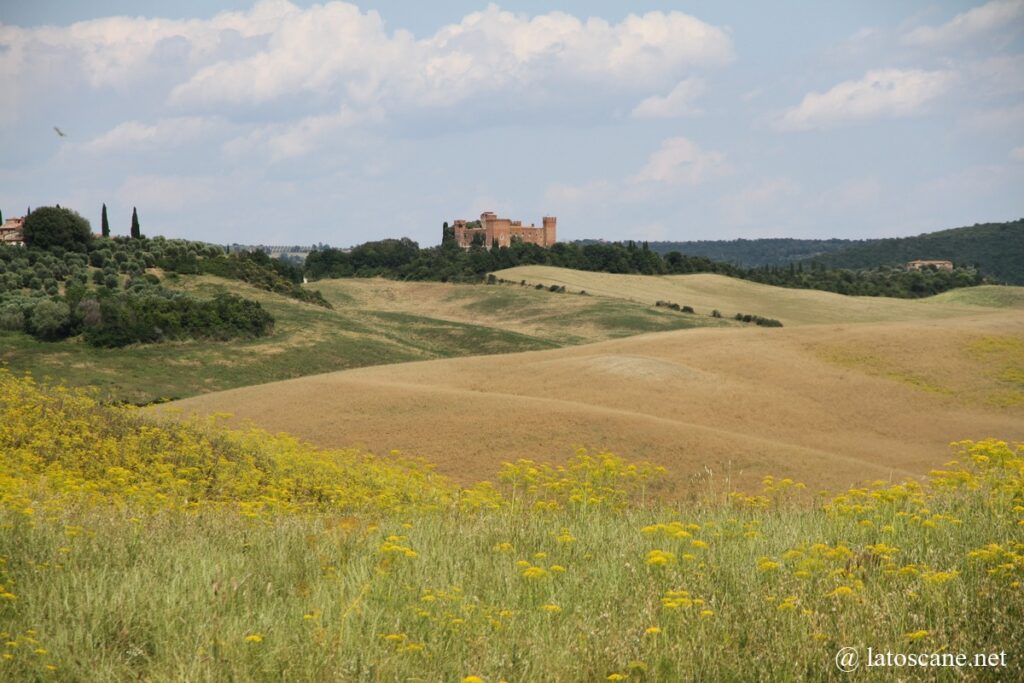
Asciano
Asciano is one of the most interesting villages in the Crete Senesi, keeping its medieval plan, part of the walls, and in the middle of the town the Torre della Mencia.
The Corboli Palace hosts the Civic Museum of Archaeological and Sacred Art, which preserves masterpieces, including the triptych Badia a Rofeno by Ambrogio Lorenzetti, the remarkable wheel of Barlaam from the 14th century, and great artists of the Sienese school, and a remarkable archaeological section fed by the excavations of the surrounding Etruscan necropolises. To see also the pretty collegiate of Sant’Agata and the church of San Francesco with its fragments of frescoes of late gothic.
In December the market “Il Tartufo Bianco delle Crete Senesi” takes place.
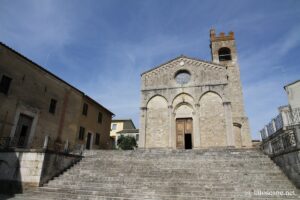
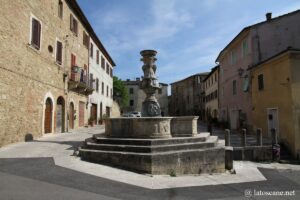
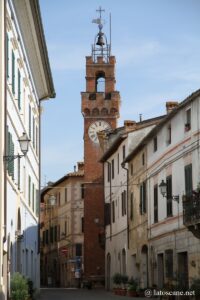
Site Transitoire
In the heart of the arid landscapes of the Crete Senesi, a little walk leads to this particular place with beautiful views. A contemporary work called Site Transitoire was sculpted here in 1993 by Jean-Paul Philippe, on a hill between Leonina and de Mucigliani. A stone seat invites the visitor to watch the sun set between the opening of the large window, especially on the summer solstice, with Siena in the distance.
Panoramic road
The panoramic road SP 438, from Asciano to Siena, is one of the most beautiful roads in the area, crossing the hills past farms and hamlets, often accompanied by rows of cypresses, offering many points of view.
At the height of Mucigliani, the Strada Leonina leads to the Transitory Site.
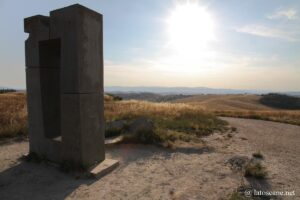
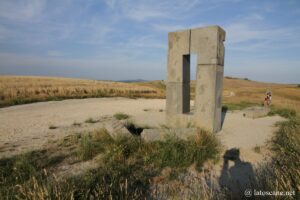
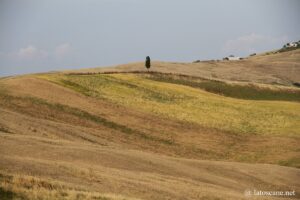
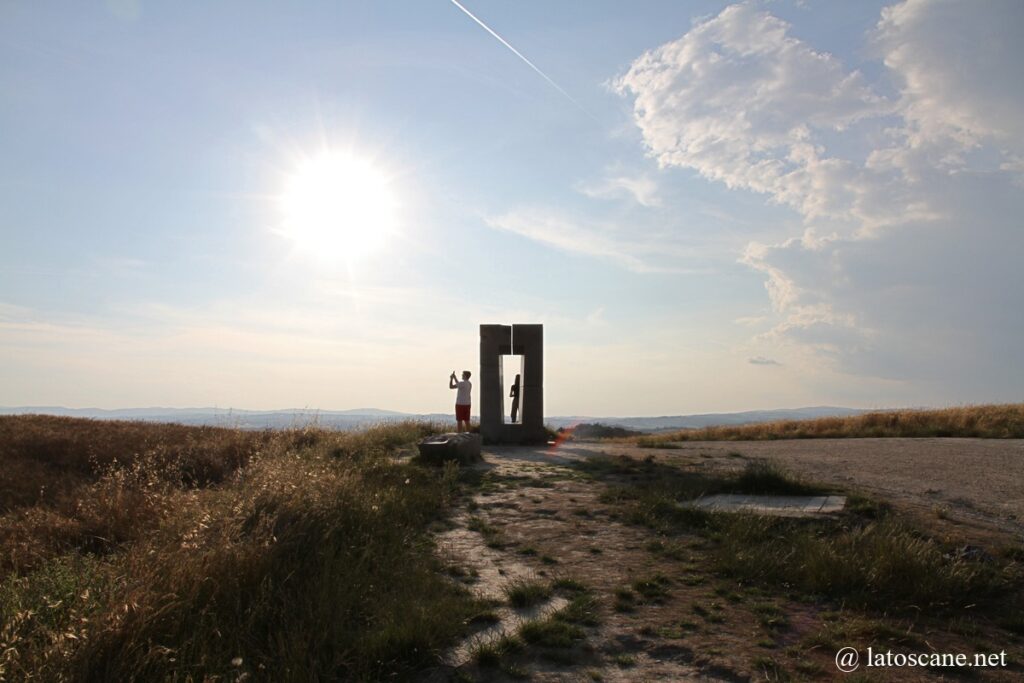
Abbey of Monte Oliveto Maggiore
In the woods near Asciano, the Benedictine Abbey of Monte Oliveto Maggiore is quite unknown despite its exceptional character. It was founded by Bernardo Tolomei in 1313 and the Benedictines of Monte Oliveto have lived there since 1319.
It preserves beautiful rooms such as the library, refectory or the former pharmacy of the sixteenth century. The 15th century church has baroque decorations and a superb choir inlaid by Fra’ Giovanni da Verona in the early 16th century. But the abbey is distinguished above all by its spectacular monumental cloister, one of the great masterpieces of the Renaissance decorated with famous frescoes on the life of Saint Benoit by Luca Signorelli in the late 15th century and Sodoma in the early 16th century.
→ See more about Abbey of Monte Oliveto Maggiore
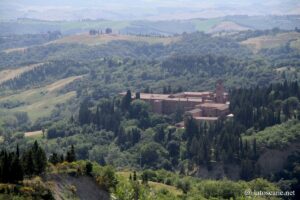
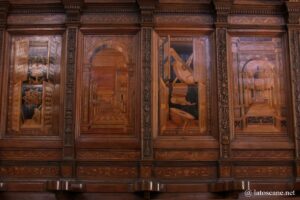
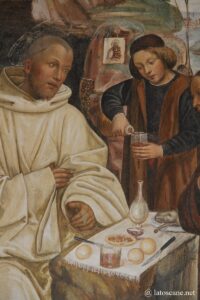
Viale dei Cipressi
This Cypress Avenue is known as a postcard photo, emblematic of the Crete Senesi and Tuscany in general. This winding path bordered by cypress trees leads from the SP 60 to reach the farm Podere Baccoleno and its agritourism, closed by a gate, but visible from the hills.
Chiusure
This charming little village is close to Asciano and the abbey of Monte Oliveto Maggiore. Its tiny centre is charming and offers a magnificent 360 degree panorama around the fortress Rocca Tolomei, on top of one of the highest hills in the Crete Senesi.
The road south of Chiusure, called Pecorile, offers great views of the clay formations and the village of Chiusure.
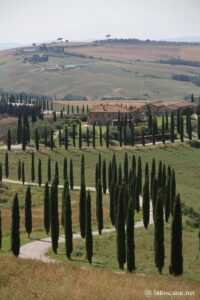
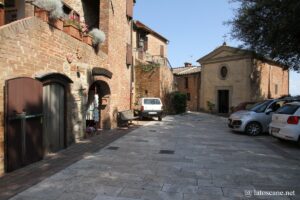
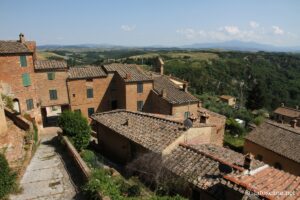
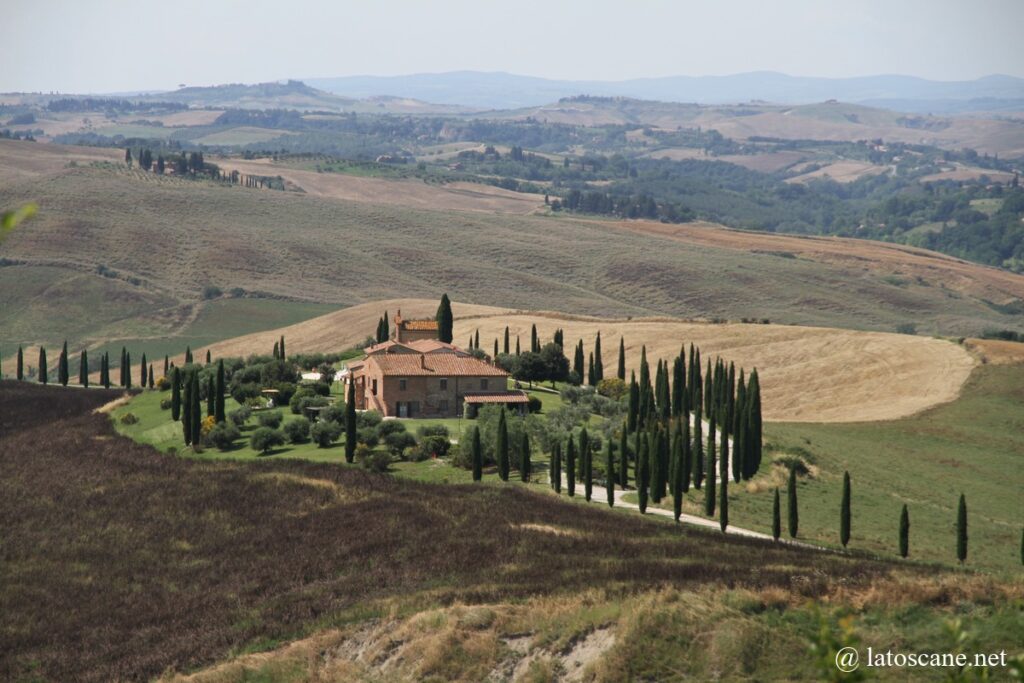
Buonconvento
In the plain of the Val d’Arbia, Buonconvento (etymologically good fortune) is a fortified village preserving most of its walls. The medieval centre with its narrow streets is crossed by Via Soccini, passing through the Podestà Palace with the Clock Tower, with the coat of arms of the podestà who ruled the city. The Church of Saints Peter and Paul, and the former Ricci Soccini Palazzo houses the Val d’Arbia Museum of Sacred Art with its masterpieces.
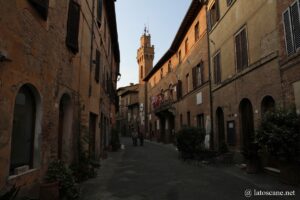
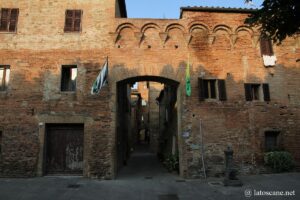
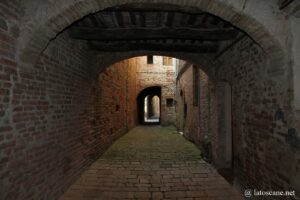
Trequanda
Trequanda is a small village on the border of the Crete Senesi and the Val d’Orcia, of ancient origin, surrounded by olive groves. The village extends at the foot of the massive fortress called Cacciaconti castle. Its church of Saints Pietro and Andrea has a beautiful chequered façade, alternating tuff and travertine stones, and a Renaissance portal.
San Giovanni d’ Asso
San Giovanni d’Asso is a fortified village along the Asso river, on the border of the Val d’Orcia. It is known for its truffles to which a museum, the Truffle Museum, is dedicated. Mention the church of San Giovanni Battista with its 17th century works and the beautiful Romanesque church of San Pietro in Villore.
Lucignano d’Asso is a charming hamlet 3 km from San Giovanni d’Asso, with cobbled streets and stone houses dating back to the 14th century, dominated by the remains of the ancient Cassero.
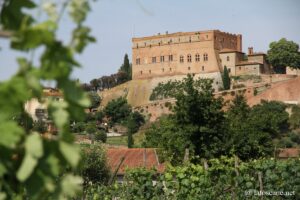
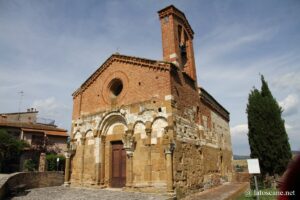
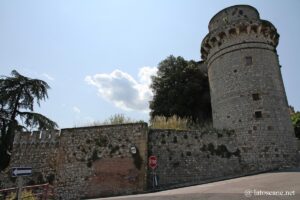
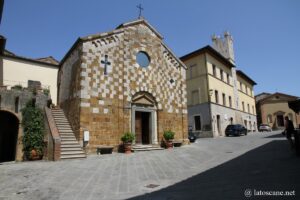
Rapolano Terme
Small spa town, Rapolano Terme has two thermal baths (the San Giovanni and the Antica Querciolaia), with its beautiful landscapes, its pleasant green setting.
The church of Santa Maria Assunta houses a 14th century Madonna del Latte.
The medieval hamlet of Serre di Rapolano is interesting. It contains the small Romanesque church of Sant’Andreino, the church of Saints Lorenzo and Andrea, and the rural museum of Antica Grancia e dell’Olio.
Serre di Rapolano
Serre di Rapolano is a picturesque medieval village with its old walls. There is a museum dedicated to olive oil, housed in the old Granaio, a fortified attic owned by the Sienese hospital of Santa Maria della Scala.
The Serraia Gate is topped with a neo-gothic loggia that connected the palace to the garden. In Piazza XX Settembre stands the fortress of Byzantine origin, with the castle as a hotel.
Monteroni d’ Arbia
At the entrance of the Val d’Orcia, Monteroni d’Arbia is an agricultural village developed between the thirteenth and fourteenth century, in the middle of lands owned by Sienese nobles and the hospital Santa Maria della Scala.
It preserves interesting churches are that of Santi Giusto and Donato, and in the surroundings the neo-gothic chapel Pieri Nerli of the nineteenth century.
Tourist map of Crete Senesi
If you see this after your page is loaded completely, leafletJS files are missing.
Useful links and sources
- General information: en.wikipedia.org
- Tourist portals: www.finestresullarte.info, www.terredisiena.it, borghi.toscana.it
Articles about the Crete Senesi
- Abbey of Monte Oliveto Maggiore
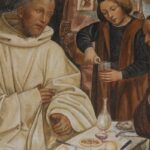 In the woods near Asciano, the Abbey of Monte Oliveto Maggiore is a rather unknown place in terms of its importance. Founded in the fourteenth century, the Gregorian songs animate ...
In the woods near Asciano, the Abbey of Monte Oliveto Maggiore is a rather unknown place in terms of its importance. Founded in the fourteenth century, the Gregorian songs animate ...
No Comments Yet